Nukeproof Horizon CS/CL Clipless Pedals
| Where To Buy | |||
|---|---|---|---|
Free shipping on orders over $50 (continental U.S. only).
International shipping available. Some exclusions apply. |
|||
Free shipping on orders over $50 (continental U.S. only).
International shipping available. Some exclusions apply. |
|||

In the last few years we've seen a huge leap forward in the bike industry in terms of suspension design, geometry and drivetrain components. One part that sometimes feels like it's still trailing a bit behind is the clipless pedal. Yes, this mundane part that connects your feet to the bike. Let's be real, you won't think twice before throwing 200 or more bucks on that shiny new carbon handlebar that matches your bike’s color scheme so perfectly. But let's say 150 bucks for a light yet strong piece of equipment with a very precise spring mechanism that should take all manner of abuse and shut up about it will probably generate some complaints. That doesn’t seem fair but then life never is – be that as it may, we were stoked when Nukeproof entered the clipless pedal game to give us another option, and we wasted little time getting a pair out on the trail to get dirty.
Nukeproof Horizon Clipless Highlights
- Available in 2 body sizes CL (larger) CS (smaller)
- Proven axle system: 2x high quality DU bushings & 4 x sealed cartridge bearings (per pair)
- Cold forged T1- 6061 alloy body with CNC finishing
- Low profile contoured chassis with optimized leading edge
- Side Support Platform
- Dual Engagement Mechanism
- SPD compatible
- Ti Axle option available
- Spares/Kits: Horizon Cro-mo Axle Kit (Pair) / Pedal Bearing Kit / Pedal Bushing / Rubber Cap / Screw Pin Set Screw Pin Set
- Colors: Black, Red, Blue and Copper
- Weight: 433 grams (Horizon CS, verified)
- MSRP: £99.99, $131.49 USD, EUR 120.49
Initial Impressions
The Horizon from Nukeproof is the new kid on the clipless pedal block and it is aimed at the enduro and DH crowd with two different body sizes. We received the smaller, lighter version (Horizon CS) for our enduro rig and with the aim of staying "foot in flat out", our only problem was that there isn't a purple ano that never dies version.

Let's geek out a bit: Shimano and Crankbrothers are the two main players in the clipless pedals arena with two different approaches and mechanisms. The old and trusty SPD pedal is assembled from a platform, with a static front cleat holder and sprung rear holder with two small coil springs on each side. The springs are not connected between one side of the pedal and the other.
Despite the Horizon Clipless being a first generation product, we found it well conceived with some cool features to help it stand out in the crowd.
Crankbrothers took a different approach to connecting the cleat to the pedal, they do so with a center sprung, eggbeater look-alike mechanism (hmmmmm...) that has the tension pre-set from the factory. On the one hand, the SPD version offers more adjustability with regards to tension, and it feels snugger when clipped in. On the other hand, the eggbeater features twice as many connection points (2 vs. 4), and when you get familiar with it, it is more intuitive to clip into (although I will note that everything is personal of course).

So then, what about the newcomer? Despite the Horizon Clipless being a first generation product, we found it well conceived with some cool features to help it stand out in the crowd. The pedal body is big but not chunky and is meant to provide good support and grip with a wide variety of shoes (we mostly tested with Specialized's 2FO Cliplite).



Each pedal has four pins on each side, which are shimmed with one or two tiny shims (depending on placement) so you can alter each pin's height if required. As somebody who once drilled their beat up old XT's to add pins to them this tester found this to be a clever idea. The pin is a simple m3 allen bolt with its head hidden inside the pedal body.



The Horizon designers took an interesting approach to grabbing the cleat. It is similar to the SPD in the overall look but has some unique features: On the Horizon pedal, both the front and rear plates are sprung and free to move when clipping in. Additionally, the cleats feature an angled edge to help with finding the clip-in point, but other than that they appear to identical to Shimano's, so you can obviously find them anywhere in the world in case you need to replace them in a hurry.


On The Trail
The bolt that sets the spring tension doesn't feature a hard stop, so with my curios hands and mind I managed to accidentally take the pedals apart, good thing I know how to assemble stuff also. Note: the pedals arrive with zero tension from the factory, don't try to turn the tension bolt any further counter clockwise or you’ll have to play with this puzzle too.

Once the pedal was put back together, the first thing we noticed on the trail was the lighter clipping-in feel created by the dual plates - even when the spring tension is high. It's not too light however, just the right amount. The float also feels better compared to the SPD's this tester usually rides. There is good support for the foot with the Horizon, which helps make sure your feet don't start to feel sore after a few minutes into the run. The overall grip is also quite good, after more than 1000 kms of testing we never slipped a foot without wanting to, so the overall design has proven itself - except in really muddy conditions (more on that later). We also found the mechanism to be reliable even after a number of hard bashes from rocks and stumps (no riders were harmed during testing).

One thing we should point out: we're not sure if it’s a feature or a shortcut but the design puts the pins away from the sole of the shoe, even with all the pin shims removed. This leaves them so they make no contact even when paired with a not-too-stiff shoe (such as most modern enduro shoes on the market right now). We found this design more suitable to use with DH-specific shoes which are more compliant and have more flex which allows them to reach the pins.

One final feature that we really liked is the cleat design. The angled front end of the cleat really helps you clip in when in a hurry (someone said racing?).
Things That Could Be Improved
We put over 1000 kms on these pedals, and they performed well in general. However, when we showed up to race the EWS in majestic Madeira, the weather was pretty bad and the unique soil was being on its most sticky behavior. Once the Horizons got really wet and muddy they became much more easier to clip out – really too easy, our feet just wouldn't stay in place over the rough stuff even with the spring tightened to the max. The cleats were relatively new back then so this wasn't the issue. Nukeproof would do well to look at this point specifically to try to improve it. It might be a result of the dual-plate design or the shape of the plates in general.
As mentioned previously, the design of the pedal body holds the pins a bit too far away from the sole of the shoe, although you could argue that the point of the pins is more about providing grip when you are unable to clip back in again for some reason. If we look at this aspect as a feature, the sole will contact the pins only on big impacts like landing from a jump or riding flat out with your heels down, Sam Hill style. It’s possible that the bigger pedal that we have yet to test (Horizon CL) would partially address this point. Additionally, a little extra grip from the pedal body itself would be great, even with shorter pins, this would keep grip more consistent over time and would also keep the shoe sole's rubber from potential premature wear. However, as we pointed out in the "On The Trail" section, we never really had an issue with grip or unclipping except in fairly extreme conditions, so this point is less of an issue than we initially thought it might be.
Finally, the spring mechanism is designed in such a way so that each side affects the other. This means that each pair of springs takes care of both sides of the pedal, and if one side breaks the other side will also not be able to clip in - which in a race situation can be devastating.
Long Term Durability
As we previously pointed out, these pedals have more than 1000 kms of all kinds of riding under their belt by now, and they still spin smooth and true. After many hard rides and several unfortunate encounters with rocks and other trail-side traps, the spindles are straight, the sealing is holding up, and the whole pedal is still working just fine.
What’s The Bottom Line?
Nukeproof entered the clipless pedal game with a viable contender. The Horizon CS offers some smart features and should be considered a solid option for those who ride on the dryer side of the planet. It feels good under your feet, it is light and it can certainly take a hit or two or three. If your mud guard is on all year long you might want to look somewhere else for a more proven platform for the wet.
More information at www.nukeproof.com.
About The Reviewer
Yonatan Yatom - Age: 22 // Years Riding MTB: 10 // Height :6'0" (1.83m) // Weight: 167 pounds (76kg)
Yonatan is a born racer and a bike addict. As a true competitor the only thing on his mind when lining up in the start gate is the finish line. Over the weekends you'll find him trying to beat the clock and everybody else in local enduro and DH races, while preparing to dip his toes in the occasional Enduro World Series event as well. Throughout the week he’ll be manning the spanners at the bike shop, reading about new stuff on the internet, and thinking about how to improve everything he rides. Yonatan’s riding style is fully pinned, smooth, and quiet but he can be nasty to his bike when needed.
Photos by Johan Hjord
1 member reviews
For the past couple of years now I have been always a flat pedal rider. They better suited my riding styles as I spend most of my time hitting jumps. Over the past year, I have been spending more time racing and riding rougher trails and I started to look into the benefits of clipless pedals. Finally, after a bunch of research, I decided to purchase the Nukeproof Horizon CL Clipless Pedalss (the DH ones) for my enduro bike. These pedals would be my first introduction to the world of clipless pedals, so it was very important to me that I choose the correct pedals. I wanted my pedals to have a big platform to replicate the flat pedal feel. The Horizon Cl pedals are the same size as an average flat pedal making them one of the biggest clipless medals on the market.
Included in the box was the two pedals, an instruction manual, two cleats, and spacers. These spacers allow you to adjust the height of the pins to make them stick out more or less. After fiddling with the pins, I decided to remove all of the spacers to allow more contact on the bottom of my shoes. The pedals also have a tension adjust located on each side of the pedal. When I first tried to clip in, I noticed the tension to be very tight but when I checked out the tension, it was set to the lowest tension possible. After about a day of learning to clip in and out, I began to feel the tension get looser and looser, but the tension adjust was still in the same position. I realized that these pedals break-in after a short period of time so many readers will need to adjust the tension after a day or so.
Fast-forward 9 months, I really enjoy these pedals. The big platform offers plenty of support and feels great against the bottom of your shoe. These pedals have also been holding up really well to the muddy and try conditions. The only problems I have had with the pedals would be the paint quality and the difficultness required to set the pedals up. After just a few muddy rides I noticed the paint starting to wear off revealing its shiny aluminum body. This didn't affect the performance, just the looks. Even to this day I am still adjusting the pedals to make them feel better. Just a slight adjustment in tension has a big effect on the feeling of the pedals which can often worsen the feel. I have spent countless hours trying to get them to feel perfect and it has been really hard to do so.
Overall, I would only recommend this pedal to someone with a lot of experience riding clipless pedals or someone who knows exactly how they want their pedal to feel. As a beginner, I found these pedals to be overwhelming to set up as there were a lot of adjustments to make.
1 comments
Post a reply to: Best Clipless Pedal on the Market?
Specifications
• Side Support Platform
• Dual Engagement Mechanism
• SPD compatible
• Ti Axle option available
• Spares/Kits: Horizon Cro-mo Axle Kit (Pair) / Pedal Bearing Kit / Pedal Bushing / Rubber Cap / Screw Pin Set Screw Pin Set
| Where To Buy | |||
|---|---|---|---|
Free shipping on orders over $50 (continental U.S. only).
International shipping available. Some exclusions apply. |
|||
Free shipping on orders over $50 (continental U.S. only).
International shipping available. Some exclusions apply. |
|||


















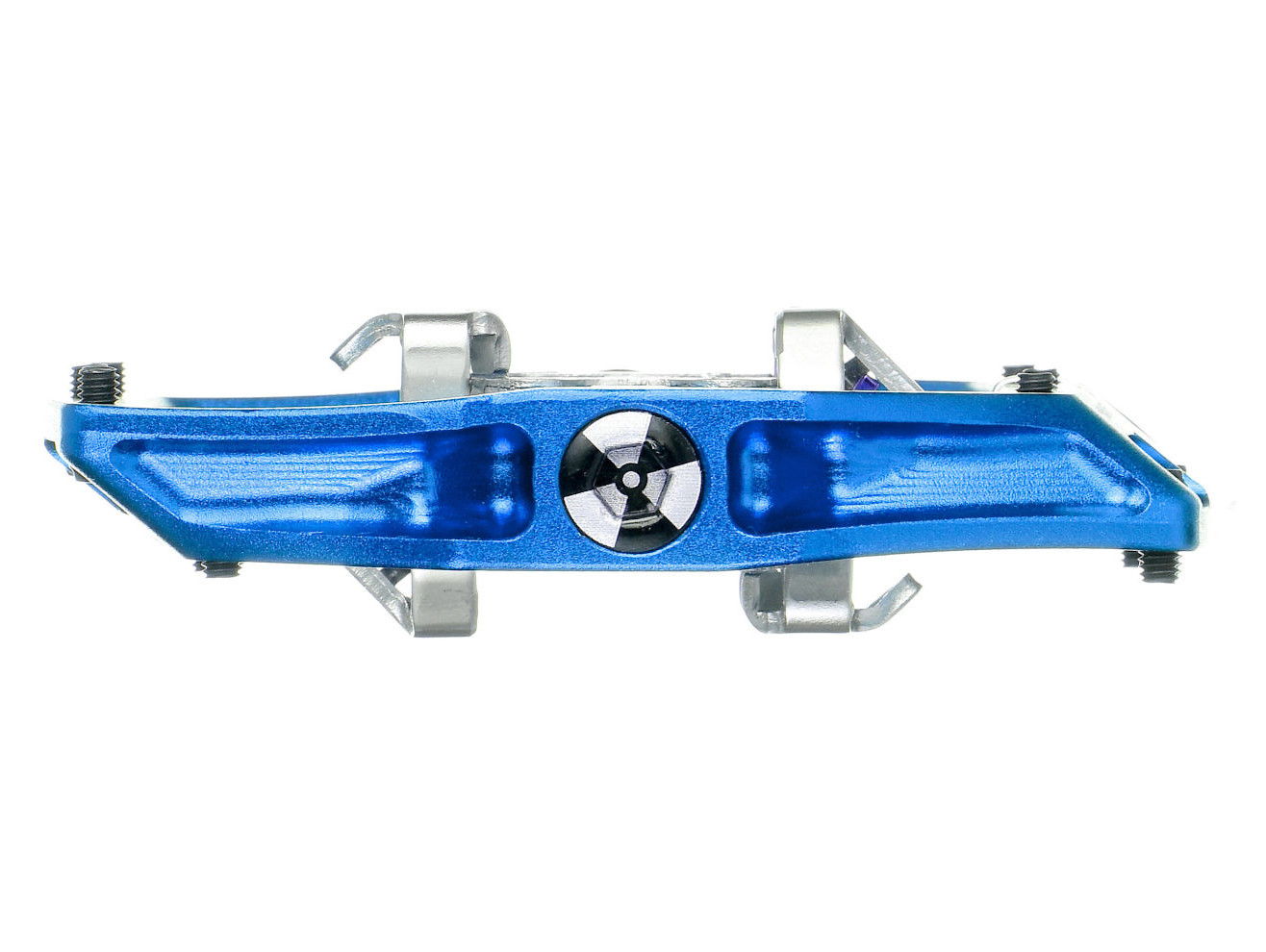





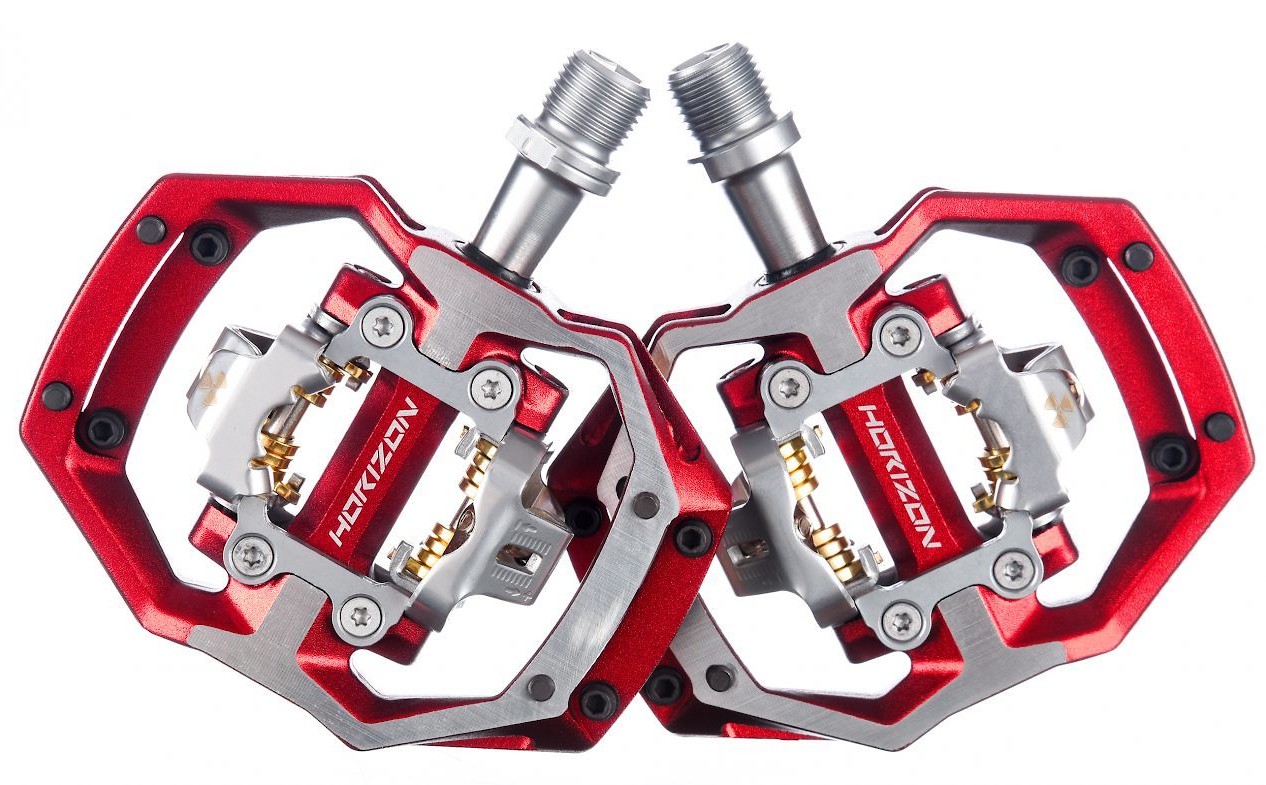




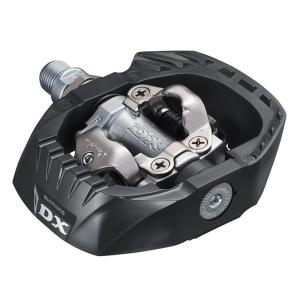
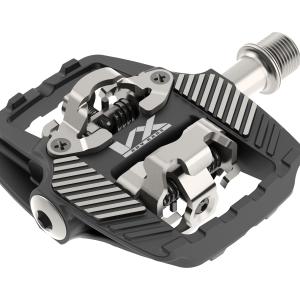
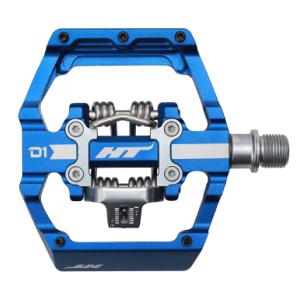
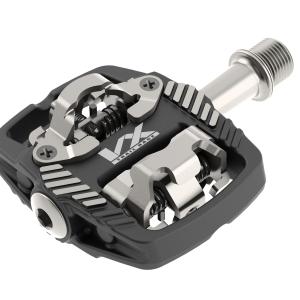













1 comments
Post a reply to: Tested: Nukeproof Horizon CS Clipless Pedal